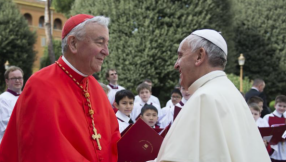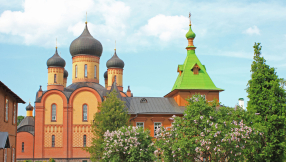'Invite your friends to church,' they boldly say from the pulpit. It's easy for them to say of course; most church leaders don't have any friends. I'm joking obviously. Yet so often we struggle to answer that repeated rallying cry from the front to take the seemingly natural step of inviting other people to come and visit our faith community. Why? What are we afraid they might see?
I've got a working theory. Because, just in the way that a comfortable middle aged man might sit in front of the television in a vest, unconcerned about what anyone else thinks of him, we become relaxed and acclimatised in church to patterns of behaviour that an outside observer might find strange, or indeed utterly bonkers. I don't think that it's fears about a boring or moralising sermon that prevent us from inviting our friends, or indeed the quality of the brown water that we serve so lovingly at the end. I think the number one reason we don't ask people to come to church is because we think they'll find the worship a bit weird.
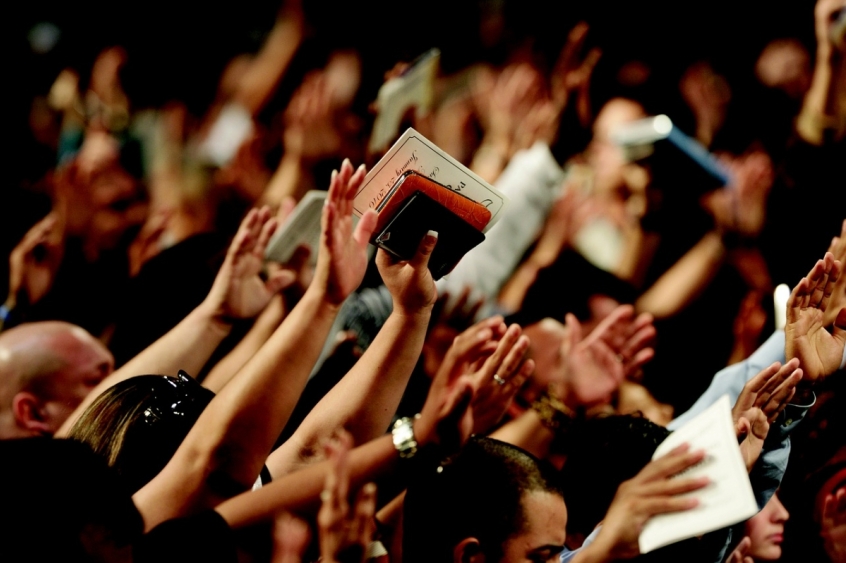
Not because the musicianship is bad – although clearly in some places where Grade 1 anything gets you a permanent spot on the rota, that is a factor – but because of the things the assembled congregation do during the singing. Now, I certainly don't want to cast aspersions on moments of intimacy between individual worshippers and their creator; clearly it is wonderful that people feel a direct connection to God, or are compelled to respond physically during worship. It's just a fact that it can often look a bit weird from the outside. Here are just eight examples of what I'm talking about.
1. The arms
Oh, the arms. Where else can you start but hand-raising? Depending on your church tradition, arm-lifting is either an act of theological defiance to indicate that you're the one charismatic in the congregation, or a health and safety nightmare due to the sheer number of people waving their bodies around simultaneously. Rooted in a verse in 1 Timothy 2 where Paul suggests people 'should pray, lifting holy hands without anger and quarrelling', it's the most popular dance move among charismatics and indicates a combination of submission and reaching for the skies (not in the Woody from Toy Story sense). There are obviously a whole plethora of styles and artistic interpretations of the arm raise. I've created a 'spotters guide' to them here. In addition, it's always fun to keep an eye out for trigger words or phrases which inspire a mass response of this nature; that line that goes 'so we raise up holy hands to praise the holy one' is enough to turn a Spring Harvest Big Top meeting into a gigantic deodorant advertisement.
2. Faceplanting
Kneeling is for wimps. If you really want to demonstrate your utter devotion to the almighty, then only a full-on spreadeagled floor-kiss will do. This is the natural and ultimate extension of the respectful and humbling act of bowing or taking a knee. There are only a couple of problems with it: first, it only really works if you're sitting in the front row (although naturally that's where the holiest and most devoted people sit), and second, it can be really awkward if you're needing to get past this person to reach the loo. Get your timing wrong and attempt to step over them just as they rise from the floor, and you'll end up riding on their back like a horse.
3. Running
This is a niche one that I've picked up from watching conference footage on Christian television. A congregant is standing still when suddenly he bolts from his position in the manner of a man who has just remembered he left the gas on. I presume this is based in that verse which says that 'those who wait on the Lord shall renew their strength, they will run and not grow weary...' (Isaiah 40 v 31), and it's a pretty literal way of demonstrating the fact (as long as you don't look too puffed out afterwards). The problem, aside from the slight sense of tension it might inspire in other worshippers, is that most churches aren't very big, so you either don't get to run very far, or end up doing an awful lot of laps.
4. The dance of the flags
There's something wonderful about seeing a middle-aged accountant named Gerald shuffle to the front during worship, lift up a large coloured flag and begin twirling it around with gay abandon like a high school cheerleader. I guess this is the modern version of King David dancing around in his revealing linen ephod, and I guess we should be thankful that our accountants don't do that. In some churches flag waving is an almost entirely alien concept, and the sudden production of a flag might be misconstrued as some sort of attempted coup. In others though, it's so welcomed that there's even a whole box of them left at the front, just in case the mood suddenly takes you to wave a bit of material on a stick around (Pro Tip: the purple one is the best/holiest).
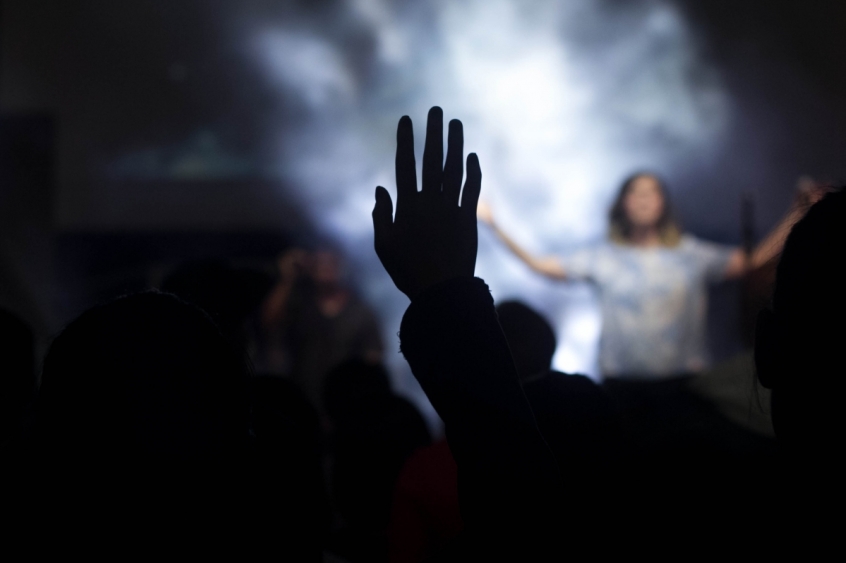
5. Deliberately singing to one another
One for the more conservative among us now, and certainly a big part of my own upbringing in church. Some more earnest and intellectual worshippers are tremendously concerned that our worship is always sensible and correct, so when the song lyrics aren't actually aimed at heaven, but more at attaining a sense of congregational agreement, they invoke this protocol. Instead of looking heavenward, closing their eyes or simply staring 1,000 yards into the distance like a good Brit, they begin to turn around and try to catch each other's eyes, a bit like that awful moment where you're saying the grace to one another. So if for example, the song includes the line, 'Rise up church with broken wings', purveyors of this particular worship habit will work hard to sing it to someone, rather than to God, perhaps for fear that they might confuse him otherwise. At its best, where everyone is on board with the idea, this can be tremendously inspiring and invigorating. At its worst, it's a bit like watching a terrible Karaoke performance at the Dog and Duck from a bloke who thinks he's Rod Stewart.
6. Clapping
The trouble with clapping as a form of musical expression is that it's completely unconducted. Some songs have well-known and choreographed clapping sections, others inspire more of a freestyle approach. And it's here, in all but the happiest and clappiest of churches, that the problems begin. One person, perhaps inspired by a mix of the music, the Holy Spirit and a driving need to keep themselves awake, begins boldly clapping along. Another person starts to join them, but can't quite find the beat and quickly loses confidence. A few more join in, perhaps in an attempt to rescue the lone clapper, but the arrival of the chorus sends them into a spin; do they stop, keeping going or change the beat? Charismatic Christian clapping is a minefield.
7. The person with the shaky egg thing
...or indeed anyone who chooses to smuggle their own musical instrument into the service. This is a thankfully more rare experience, but having grown up in a church where this was painfully common, I share it now if only as an act of self-help therapy. This chap at my church had purchased a small smooth coloured egg-shaped shaker, which he would bring along each Sunday and then rhythmically jiggle in time (or more often, not) to the music. I'm sure it helped him to enter in more deeply to the presence of the Almighty, but to the rest of us it just created a disconcerting sense that there was a rattlesnake somewhere in the building. In a sense this is merely the modern manifestation of the traditional tambourine, but I will let you draw your own conclusions about whether that's a good thing.
8. Actions
I can only imagine the horror of being an introvert in a family worship service. Where else outside of preschool children's parties and nightclub renditions of YMCA are grown adults asked to make a variety of shapes with their bodies while singing? The best action songs, certainly from an adult perspective, involve a range of movements which can all be performed while standing still and preferably without moving your elbows; some, like that Lighthouse one, demand you make a choice between unholy abstinence and abject personal humiliation. Incidentally, the very worst thing about being a parent in church is when you're sitting at the front with your kids and you have no idea if the people behind you are also vigorously attempting the actions, or just silently judging you. If in doubt, I always assume the latter.
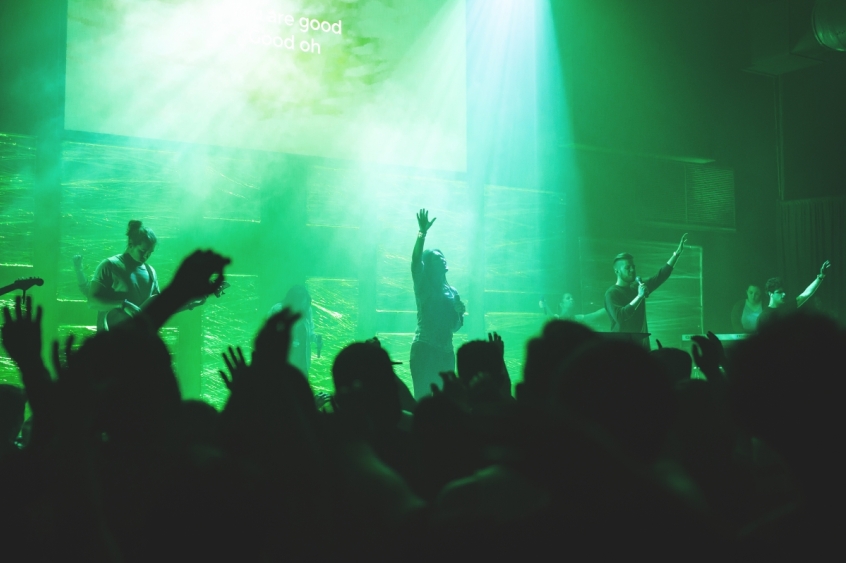
All of this begs the question: should we be toning ourselves down in order not to put off visitors – or indeed to put ourselves off the idea of inviting them in the first place? Of course not. If these are genuine expressions of worship, then we shouldn't be ashamed of them. Instead, perhaps we just need to get a bit more comfortable with the idea that we're a little bit weird when you first come across us. When we invite our friends to church, we're inviting them to experience the real thing, not a toned down or carefully managed show run like a school who've got the inspectors in. We're a bit weird, but of course we are: we're connected to a supernatural power who creates galaxies and raises the dead. Perhaps visitors won't find our oddness half as off-putting as we might imagine.
Martin Saunders is a Contributing Editor for Christian Today and the Deputy CEO of Youthscape. Follow him on Twitter @martinsaunders.











